Contents


Radish has long been grown in gardens, because people have learned to appreciate its beneficial properties. Different varieties of radish contain sugar, proteins, dietary fiber, in addition, a large amount of vitamin C, potassium, magnesium, sulfur, calcium. Thanks to this composition, this unpretentious vegetable will not let you die of hunger in difficult times, restore immunity after winter, and cure many diseases. Traditional medicine uses all types and varieties to cleanse the liver and kidneys, increase appetite, improve the functioning of the gallbladder and bladder. Black radish is considered to be almost the most useful, almost everyone was treated for cough with it. About what kind of radish happens, we will discuss in our article.
Radish roots can vary in size, shape, and color. Here and winter round white, red and purple radish, yellow, black and green radish (although the pulp of all varieties of radish is white). The main types of radish are summer and winter radish.
Early maturing
It is generally believed that the radish plant is biennial. However, early ripening and early ripening varieties are more likely to be annuals, since they may well shoot in the first year of growth. They do everything so quickly that they can flower and mature in one season if they are allowed to.
All early varieties of radish are not intended for long-term storage, they are consumed for several days after harvest. Summer varieties ripen in a short period of 30 to 60 days.
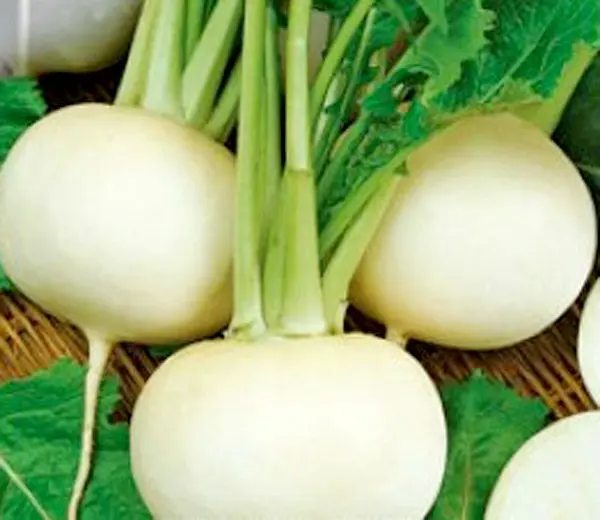
“Odesskaya 5”
One of the early ripening varieties most beloved by summer residents, it ripens in 30–40 days from the moment of sowing. An oval-conical root crop grows from 50 to 100 g in weight, its flesh is white, tender, juicy, very tasty. The yield is high – from 1 square meter you can get up to 7 kg of useful root crops, but he doesn’t want to be stored at all, so it’s not profitable to grow it for sale, it’s best to eat it right from the garden, then you can fully appreciate the pleasant somewhat spicy taste and get a benefit.
“Green Goddess”
This is a young variety that is quickly becoming popular due to its qualities. The correct rounded shape and green color of the radish make it look very impressive. A small content of mustard oils makes its taste quite soft, slightly sharp. The root crop contains amino acids, mineral salts and microelements that are easily digestible, which makes it possible to include the vegetable in therapeutic diets. Breeders have especially tried to increase the shelf life, so that the crop can be stored for a long time or transported from place to place without loss of quality.
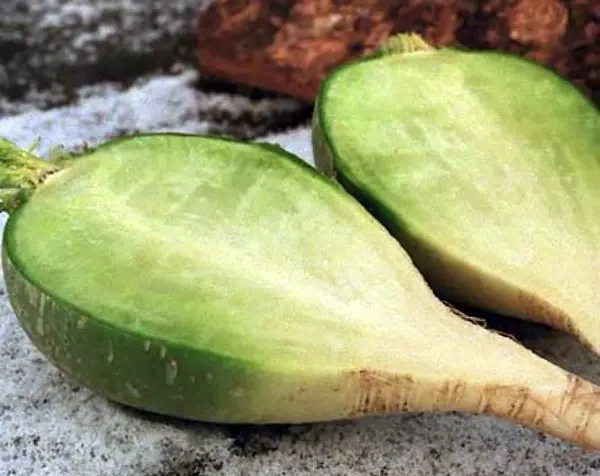
Mayskaya
Famous for its oval juicy white roots with a mildly spicy taste. It ripens in 50-60 days, but is not subject to long-term storage, so it must be consumed immediately.
“Summer round white”
Ripens 40-45 days after sowing. Juicy tasty root crops grow from 70 to 100 g in weight, but they must be removed immediately – ripened root crops left in the ground can rot or form a hollow inside. When growing this variety, you need to determine exactly how long it takes for it to ripen so as not to get a spoiled crop, and it can only be learned by experience.
“Sudarushka”
It matures in about 40 days, it is usually planted in summer, but will grow beautifully if sown in spring or even autumn. A very tasty large turnip is half sticking out of the ground, so it is easy to clean it.
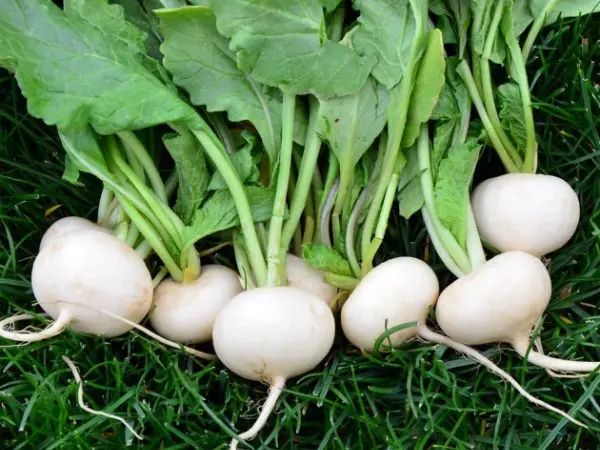
“Daikon” or “Japanese Radish”
Pleasant taste, unpretentiousness in care, medicinal properties, large size – this Japanese vegetable has a lot of advantages. A long root crop can grow up to 60 cm, and up to 10 cm in diameter. One of the varieties – Misato – is painted pink, which looks elegant and unusual. At “Daikon” they eat not only the root crop, but all parts of the plant.
It is very important that this plant does not absorb harmful substances from the environment at all, it can be grown on the side of a busy highway or in the territory of a plant with harmful production, it will not accumulate any carcinogens or toxins.
The only inconvenience is that this variety can rush to throw out the peduncle with an increase in daylight hours over 13–14 hours.
The word “daikon” refers to all Japanese radish, and there are hundreds of varieties, among them there are even giant ones. The Japanese eat this vegetable not only raw, they salt it, boil it, pickle it, preserve it, extract bitter and sweet varieties.
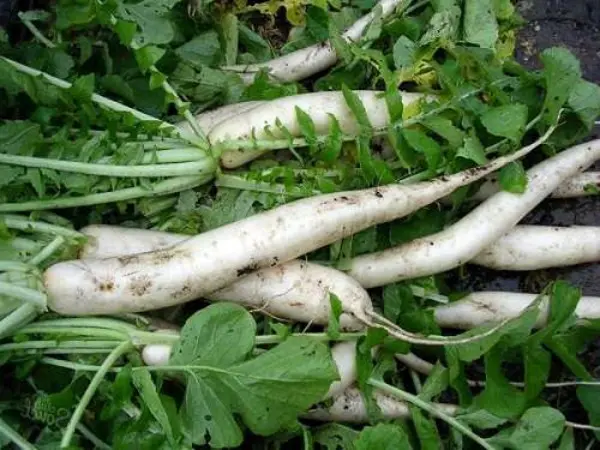
The middle-ripening
Mid-season and late-ripening varieties are winter, their ripening starts from 80 days from the date of sowing, it is among them that you need to choose vegetables for long-term storage.
“Wonderful” or “Wonderful”
Harvest can be harvested in 80-90 days. A black round root crop grows on average up to 300–350 g. The pulp is white, juicy, very dense. Usually it is sown in mid-June so that it is fully ripe before the cold weather. Can lie all winter without losing juiciness.
“Winter round white”
Ripens from 80 to 100 days. A round white root crop can be elongated into an oval or flattened with a firm and juicy pulp that is quite spicy in taste. Perfectly stored in a cellar for several months, without losing in taste or benefits.
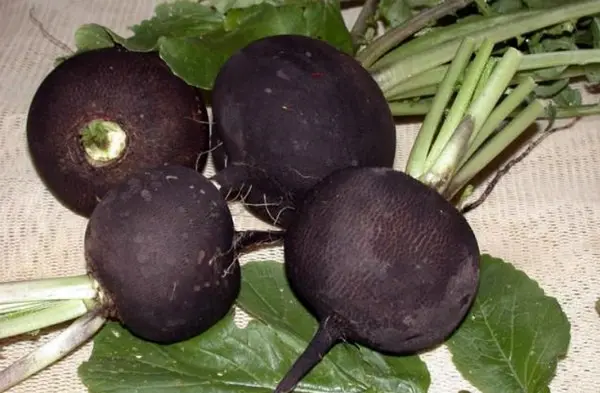
“Winter round black”
This very famous variety does not need to be introduced, it is considered the most useful among all relatives. Ripening occurs 110–120 days after sowing. The black skin is smooth or furrowed, the juicy flesh is white with a slight pungency. It differs not only in good keeping quality, but also in excellent yield.
“Winter long black”
Root crops of an elongated shape, can grow up to 400 g, the pulp is fibrous, but juicy and crispy. It remains the same after several months of storage.
“Margelanskaya” or “Chinese”
It is also called “Lobo”. This is not a very common variety so far with us. He loves moisture and organic fertilizers. The antiseptic properties of the root crop, the ability to remove excess salts and cholesterol from the body can improve the health of many people. To taste, it is similar to any radish – spicy, juicy, perfectly absorbed by the body, used in salads, well stored.
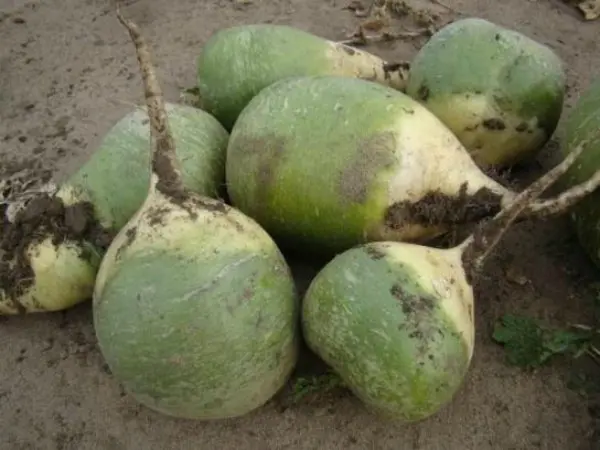
late ripening
Late-ripening varieties ripen for 100-120 days, all this time the radish requires care, no matter how unpretentious it may be. Of course, it is easier to sow an early-ripening variety, until the root crop is fully ripe, it will not tire the owner in any way (it just won’t have time), but only winter varieties can be planted for the winter.
“Gyvoronskaya”
The variety is not capricious, absolutely unpretentious, it is advised to grow it for beginner gardeners. Its white cylindrical root crops will not be afraid even of the autumn cold. The pulp is fibrous, hard and dense, the taste is sharp, the smell is strong. It can be stored for a long time, it becomes softer over time (to taste), but not very much. To add it to the salad, it is advised to leave the already chopped root crop in the fresh air for a couple of hours, but along with the sharpness, part of the vitamins and essential oils will disappear. Spicy sauces and snacks are prepared from it, like horseradish.
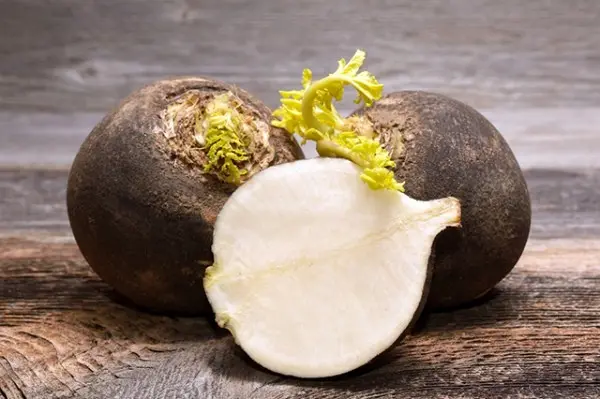
“Gyvoronskaya 27”
This hybrid proves that not only the Japanese “Daikon” is huge. For 120 days from the emergence of seedlings to the ripening of the crop, the root crop has time to grow up to 50 cm in length and up to 2 kg in weight. Only, unlike the Japanese, we do not boil radishes, but in pickled form, these root crops are beyond praise.
The Healer
The name reflected the high opinion of the creators about the usefulness of this radish. Black round root crops have a weight of approximately 250 g, juicy, tender-tasting pulp.
Excellent yield, good keeping quality, excellent taste and a lot of useful properties make it possible to grow this variety for commercial purposes.
Video “Choosing a radish for planting”
This video will help you choose a variety of radish for sowing, as well as tell you about the timing of planting root crops.
What to choose
As a rule, after winter, all summer residents want to get a crop of vitamin vegetables early. For this purpose, radish is ideal. White radish is considered the most spicy, it is rarely put in salads, and even then in small quantities. Most often, it is left for the winter, pickled, hot sauces and snacks are made from it, it is called bitter.
Black radish is not so spicy, it is considered the most useful. They make salads and medicinal tinctures from it, eat it in summer and winter. We grow Chinese and Japanese radishes that are not too spicy, they are also eaten in salads or pickled.
The earliest radish is planted in March, it is frost-resistant and can not only endure spring cold snaps, but even germinate at low temperatures. Here she is, and gets on our table in the spring. After April 25, early ripening varieties are sown, which give root crops as early as June. But later, in June, they plant those vegetables that are going to be stored for a long time, put in the cellar for the winter.
Video “Growing radish”
Thanks to this video, you will learn everything about growing radishes: from sowing seeds to storing root crops.









